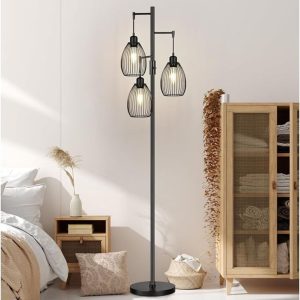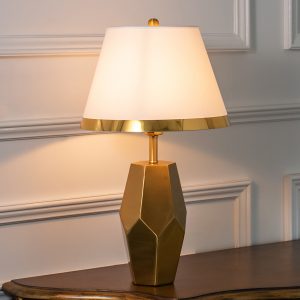Chandeliers have a rich history dating back to medieval times. The term “chandelier” originates from the French word “chandelle,” meaning candle. Initially, chandeliers were simple wooden crosses with spikes to hold candles, used to illuminate large spaces in castles, churches, and monasteries.
Over time, they became more ornate, crafted from materials like bronze, brass, and crystal. The 15th century introduced glassmaking techniques that enabled the creation of intricate glass chandeliers, which became symbols of wealth and status. The 18th century brought significant advancements in chandelier design with the introduction of gas lighting.Kensulighting
This innovation allowed for larger and more elaborate chandeliers, no longer constrained by the limitations of candlelight. The 19th century saw the transition from gas to electric lighting, further revolutionizing chandelier design. Electric chandeliers became more accessible to the general public and were no longer exclusive to the elite.
Today, chandeliers remain popular in both residential and commercial spaces, offering a wide range of styles and designs. They have evolved from simple wooden structures to luxurious lighting fixtures synonymous with elegance and sophistication. Throughout their history, chandeliers have maintained their status as symbols of opulence and grandeur, from medieval castles to modern upscale homes and hotels.
Materials and Craftsmanship: The Art of Making a Luxurious Chandelier
Traditional Materials and Craftsmanship
Traditionally, chandeliers were crafted from materials such as bronze, brass, and crystal, chosen for their durability and ability to reflect light, creating a dazzling display when illuminated. Crystal chandeliers, in particular, have long been associated with luxury and are often seen as a status symbol due to the intricate craftsmanship required to create them.
Modern Materials and Designs
In addition to traditional materials, modern chandeliers also incorporate a wide range of other materials such as glass, acrylic, and even recycled materials. These contemporary designs often feature sleek lines and minimalist aesthetics, appealing to those with a more modern sensibility.
The Art of Chandelier Making
Regardless of the materials used, the craftsmanship involved in creating a chandelier is a true art form. Skilled artisans meticulously assemble each piece, ensuring that every crystal or glass element is perfectly placed to create a stunning visual effect when the chandelier is illuminated. The art of making a luxurious chandelier requires a combination of traditional techniques and modern innovation.
Whether crafted from traditional materials or incorporating contemporary elements, chandeliers continue to be a testament to the skill and artistry of the craftsmen who create them.
Chandelier Styles: From Classic to Contemporary
Chandeliers come in a wide variety of styles, ranging from classic and traditional designs to sleek and modern interpretations. Classic chandeliers often feature ornate details, such as intricate metalwork and cascading crystals, evoking a sense of timeless elegance. These designs are often seen in formal dining rooms, grand foyers, and ballrooms, where they serve as a focal point and make a bold statement.
On the other end of the spectrum, contemporary chandeliers embrace clean lines, minimalist aesthetics, and innovative materials. These designs are often found in modern homes, boutique hotels, and upscale restaurants, where they add a touch of sophistication and style to the space. Contemporary chandeliers may feature geometric shapes, asymmetrical designs, or unexpected materials such as recycled glass or metal.
In addition to classic and contemporary styles, there are also transitional chandeliers that blend elements of both traditional and modern design. These versatile fixtures are well-suited for a wide range of interior styles, making them a popular choice for those seeking a chandelier that can seamlessly integrate into their existing decor. Whether you prefer the timeless allure of a classic chandelier or the sleek sophistication of a contemporary design, there is a style to suit every taste and aesthetic preference.
Choosing the Perfect Chandelier for Your Space
When selecting a chandelier for your space, there are several factors to consider to ensure that you choose the perfect fixture. The size of the room and the height of the ceiling will play a significant role in determining the appropriate size and scale of the chandelier. A large, grand chandelier may be well-suited for a spacious foyer or dining room with high ceilings, while a smaller fixture may be more appropriate for a bedroom or bathroom.
The style of the chandelier should also complement the existing decor and architectural features of the space. A classic crystal chandelier may be an ideal choice for a formal dining room with traditional furnishings, while a sleek, modern design may be better suited for a contemporary living room with minimalist decor. In addition to size and style, it’s important to consider the function of the chandelier.
Will it be the primary source of light in the room, or will it serve as an accent piece? Some chandeliers are designed to provide ample illumination for large spaces, while others are more decorative in nature and may be used in conjunction with other lighting fixtures. Ultimately, choosing the perfect chandelier for your space requires careful consideration of size, style, and function to ensure that it enhances the overall aesthetic and ambiance of the room.
Maintenance and Care for Your Chandelier
Proper maintenance and care are essential for preserving the beauty and functionality of your chandelier. Regular cleaning is necessary to remove dust, dirt, and grime that can accumulate on the surface of the fixture. Depending on the material and design of your chandelier, cleaning methods may vary.
For crystal chandeliers, gentle cleaning with a soft cloth or duster is recommended to avoid damaging delicate crystals. Metal or glass chandeliers may require more thorough cleaning with mild soap and water to remove stubborn stains or fingerprints. In addition to cleaning, it’s important to inspect the electrical components of your chandelier regularly to ensure that they are in good working condition.
Loose wires or faulty sockets should be addressed promptly by a qualified electrician to prevent potential safety hazards. If your chandelier features removable parts such as crystals or glass elements, it’s advisable to store them carefully when not in use to prevent breakage or damage. Proper storage will also help preserve the luster and clarity of these decorative elements over time.
By following these maintenance tips and caring for your chandelier diligently, you can ensure that it remains a stunning focal point in your space for years to come.
Chandeliers as a Symbol of Luxury and Elegance
Aesthetic Appeal and Symbolic Significance
In addition to their aesthetic appeal, chandeliers also hold symbolic significance as a representation of wealth and prestige. Historically, they were reserved for the elite and were often used to showcase one’s social standing and affluence. Even today, owning a luxurious chandelier is seen as a mark of success and discerning taste.
Practical Importance in Grand Spaces
Beyond their symbolic value, chandeliers also hold practical importance as sources of illumination in grand spaces such as ballrooms, theaters, and cathedrals. Their ability to cast a warm and inviting glow while creating a sense of drama and grandeur has made them an indispensable element in interior design.
Timeless Allure of Luxury and Elegance
Whether adorning the ceilings of stately homes or gracing the interiors of luxury boutiques, chandeliers continue to captivate with their timeless allure as symbols of luxury and elegance.
The Timeless Appeal of Chandeliers in Modern Interior Design
Despite their centuries-old history, chandeliers continue to hold an enduring appeal in modern interior design. Their ability to transform an ordinary space into an extraordinary one makes them a popular choice for designers and homeowners alike. Whether used in traditional settings or contemporary environments, chandeliers add an element of drama and sophistication that is unmatched by other lighting fixtures.
In modern interior design, chandeliers are often used as statement pieces that anchor the room and serve as a focal point. Their versatility allows them to complement a wide range of design styles, from classic and vintage-inspired interiors to sleek and minimalist spaces. Whether suspended above a dining table, in an entryway, or in a living room, chandeliers create an instant sense of luxury and glamour.
Furthermore, advancements in technology have expanded the design possibilities for chandeliers, allowing for innovative shapes, materials, and lighting effects. LED technology has enabled designers to create energy-efficient chandeliers with customizable color options and dynamic lighting effects that can be tailored to suit any mood or occasion. In conclusion, the timeless appeal of chandeliers in modern interior design lies in their ability to evoke a sense of grandeur and elegance while seamlessly integrating into contemporary spaces.
As symbols of luxury and sophistication, chandeliers continue to captivate with their timeless allure and remain an essential element in interior design for years to come.



